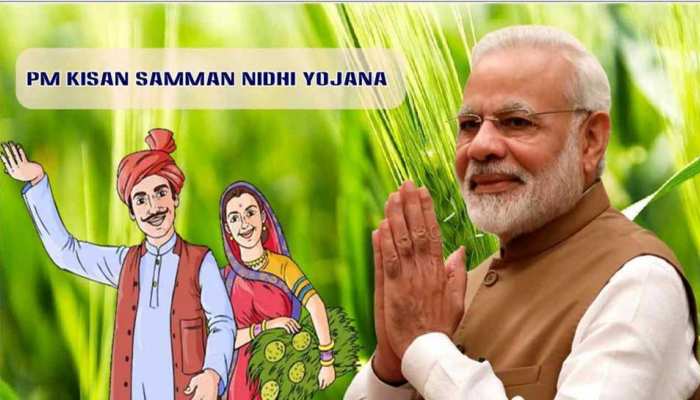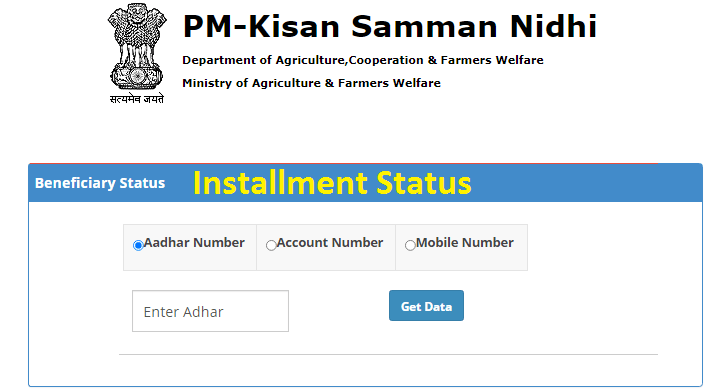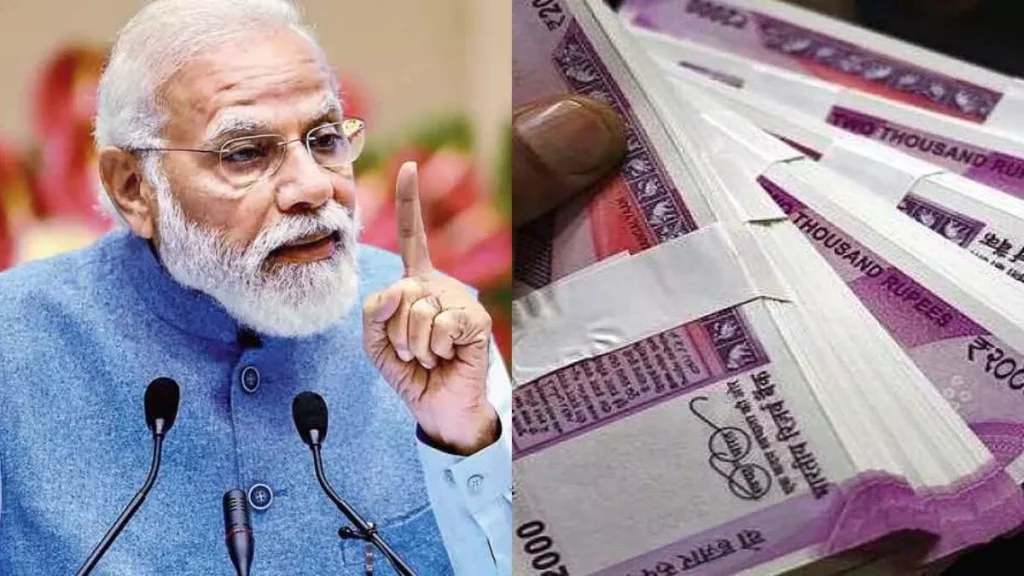The Pradhan Mantri Kisan Samman Nidhi Yojana (PM-KISAN) Yojana, launched by the Indian government in 2019, represents a significant stride in the nation’s effort to uplift its agricultural sector. This ambitious scheme, rooted in the commitment to support the country’s farmers, aims to provide financial aid to small and marginal farmers across India. Introduced against a backdrop of various challenges faced by the agricultural sector, including fluctuating crop prices, increasing input costs, and uncertainties due to climate change, PM-KISAN stands as a beacon of hope for millions of farmers. It not only seeks to provide immediate economic assistance but also endeavors to ensure sustainable agricultural practices and enhance rural livelihoods. As we delve deeper into the nuances of this program, it’s essential to understand its comprehensive impact, from its targeted approach to assisting farmers to its broader implications on India’s agrarian economy and rural development.
Overview of PM-KISAN Yojana

The Pradhan Mantri Kisan Samman Nidhi (PM-KISAN) Yojana is a central sector scheme launched by the Government of India in February 2019. Its primary aim is to provide income support to all landholding farmers’ families across the country, helping them meet their financial needs for agricultural and allied activities, as well as domestic needs. The scheme is significant in its reach and impact, given India’s large agrarian community. Here’s an overview of the key aspects of PM-KISAN Yojana:
- Financial Assistance Provided: Under the scheme, an income support of 6,000 INR per year is provided to eligible farmer families. This amount is paid in three equal installments of 2,000 INR every four months.
- Eligibility Criteria: The scheme initially targeted small and marginal farmer families, with combined landholding/ownership of up to 2 hectares. The definition of family for the scheme is husband, wife, and minor children. However, later the scheme was extended to cover all farmer families irrespective of the size of their landholdings.
- Exclusion Categories: Certain categories of beneficiaries such as institutional landholders, farmer families holding constitutional posts, serving or retired government employees, and those paying income tax, among others, are excluded from the scheme.
- Funding and Disbursement: PM-KISAN is a fully centrally funded scheme. The funds are directly transferred to the bank accounts of the beneficiaries through Direct Benefit Transfer (DBT) mode, ensuring transparency and eliminating middlemen.
- Implementation and Registration: The scheme is implemented by the Ministry of Agriculture and Farmers Welfare. Farmers must register themselves through the local patwari/revenue officer or a nodal officer (nominated by the state government). The Common Service Centres (CSCs) are also authorized to register farmers for the scheme upon payment of a fee.
- Verification and Validation: The state governments and UT administrations identify the farmer families eligible for support as per the scheme guidelines. The existing land-ownership system/record of land in different states/UTs forms the basis for the verification.
- Updates and Enhancements: Since its inception, PM-KISAN has undergone several updates to widen its scope and improve its delivery mechanisms. This includes expanding the beneficiary base and streamlining the registration and validation processes.
PM-KISAN Yojana is an example of a targeted government intervention aimed at ensuring the economic welfare of farmers, a critical sector in the Indian economy. The scheme is not just a financial support program but also a step towards empowering farmers and boosting agricultural productivity.
Goals and Objectives
The Pradhan Mantri Kisan Samman Nidhi (PM-KISAN) Yojana was established with a set of clear goals and objectives, primarily aimed at bolstering the economic condition of farmers and enhancing agricultural productivity in India. Here are the key goals and objectives of the scheme:
- Income Support to Farmers: A central goal of PM-KISAN is to provide direct income support to the farmers. By offering ₹6,000 per year in three installments, the scheme aims to alleviate the financial burden of the farmers, helping them meet their agricultural and household expenses.
- Boosting Agricultural Productivity: By providing financial assistance, the scheme intends to enable farmers to invest in inputs and resources like seeds, fertilizers, equipment, and labor. This investment is expected to boost agricultural productivity and crop yield.
- Strengthening Rural Economy: A significant portion of India’s population depends on agriculture for their livelihood. By injecting cash into the rural economy, PM-KISAN aims to stimulate rural spending, leading to overall economic growth in these areas.
- Reducing Farm Distress: The scheme seeks to mitigate the financial distress faced by small and marginal farmers, often exacerbated by factors such as crop failure, indebtedness, and fluctuations in market prices.
- Encouraging Modern Agricultural Practices: With more financial resources at their disposal, farmers are encouraged to adopt modern and sustainable agricultural practices. This includes the use of better quality seeds, fertilizers, and the adoption of new technologies which can increase both the quality and quantity of agricultural produce.
- Inclusivity in Farming Support: The expansion of the scheme to include all farmer families irrespective of landholding size reflects the government’s commitment to inclusive support for the farming community.
- Supplementing Financial Resources: The scheme acknowledges that farming income is often insufficient to meet all the needs of farmer families. Hence, it supplements their income to help them take care of expenses related to agriculture as well as their households.
- Promoting Self-Reliance among Farmers: By providing financial support, PM-KISAN aims to reduce farmers’ dependence on loans and credit from informal sources, which often come with high interest rates and lead to a debt trap.
In summary, PM-KISAN Yojana is not just a financial assistance program but a comprehensive approach towards empowering the farmers, enhancing agricultural productivity, and ensuring the overall socio-economic upliftment of the rural sector in India.
Implementation Mechanism
The implementation mechanism of the Pradhan Mantri Kisan Samman Nidhi (PM-KISAN) Yojana is designed to ensure efficient, transparent, and targeted delivery of benefits to eligible farmers across India. Here’s a detailed look at how the scheme is implemented:
- Central and State Roles:
- The central government is responsible for funding the scheme and establishing broad guidelines and parameters.
- State governments and Union Territory administrations play a critical role in identifying and validating beneficiary farmers based on the scheme guidelines.
- Beneficiary Identification:
- The identification of eligible beneficiaries is carried out by the state governments. It’s based on land ownership records and other criteria set out in the scheme.
- The list of beneficiaries is then uploaded to the PM-KISAN portal by the states/UTs.
- Technology Integration:
- The implementation of PM-KISAN is heavily reliant on technology for transparency and efficiency. A dedicated PM-KISAN portal (pmkisan.gov.in) manages the entire process from registration to fund disbursement.
- Aadhaar linkage is mandatory for the transfer of benefits to ensure the funds reach the correct recipients and prevent fraud.
- Direct Benefit Transfer (DBT):
- The financial benefit under the scheme is directly transferred to the bank accounts of the beneficiaries. This is done through the DBT mechanism, which reduces delays and eliminates the possibility of any leakage.
- Periodic Installments:
- The financial benefit is provided in three equal installments of ₹2,000 each, over four-month periods throughout the year.
- Monitoring and Review:
- Regular monitoring and review are conducted at various levels to ensure the effective implementation of the scheme. This includes periodic review meetings at the national, state, and district levels.
- Grievance redressal mechanisms are in place to address any issues faced by beneficiaries.
- Publicity and Awareness:
- Efforts are made to raise awareness about the scheme through media, workshops, and direct communication with farmers to ensure that eligible beneficiaries are aware and can enroll in the scheme.
- Cross-Verification of Data:
- Data provided by the states/UTs undergoes a series of cross-verification to ensure the accuracy of beneficiary details. This includes verification against land record databases and Aadhaar.
- Role of Local Authorities:
- Local authorities like patwaris, agriculture officers, and village panchayats are involved in the beneficiary identification and verification process.
- Updates and Feedback:
- The scheme allows for periodic updates and corrections in beneficiary data to accommodate changes in land records or beneficiary status.
Impact Assessment

Assessing the impact of the Pradhan Mantri Kisan Samman Nidhi (PM-KISAN) Yojana is crucial to understand its effectiveness and the extent to which it has achieved its objectives. The impact of the scheme can be analyzed across several dimensions:
- Financial Relief to Farmers: One of the immediate impacts of PM-KISAN has been the provision of financial relief to millions of farmers. The direct cash transfers have helped farmers in meeting their immediate agricultural and household needs, reducing their financial stress.
- Investment in Agriculture: With the additional income, farmers have been able to invest in quality seeds, fertilizers, and equipment, leading to potential improvements in agricultural productivity and crop yields.
- Rural Economy Stimulus: The injection of funds into the rural economy has had a multiplier effect. Increased spending capacity of farmers can lead to higher demand for goods and services in rural areas, stimulating the local economies.
- Reduction in Indebtedness: The scheme may have contributed to reducing the reliance of farmers on informal credit sources, often associated with high interest rates, thus helping in lowering the overall indebtedness in the farming community.
- Socio-Economic Benefits: Beyond the economic impact, PM-KISAN has potential socio-economic benefits, such as improved quality of life, better health and education for farmer families, and enhanced food security.
- Gender and Social Equity: By including female farmers and focusing on small and marginal landholders, the scheme also addresses aspects of gender and social equity in the agricultural sector.
- Technological Advancements: The scheme’s reliance on technology for direct benefit transfer (DBT) has encouraged digital literacy and the use of banking systems among the rural population.
- Challenges and Limitations: Despite its benefits, the scheme faces challenges such as issues in the identification of beneficiaries, delays in payment, and difficulties in accessing the scheme for some eligible farmers.
- Comparative Studies and Data: Various studies and surveys have been conducted to assess the impact of PM-KISAN. These studies often provide comparative data on agricultural productivity, farmer income, and rural development before and after the implementation of the scheme.
- Policy Implications: The impact of PM-KISAN also offers insights for policy formulation, particularly in the areas of agricultural welfare, rural development, and direct benefit transfer schemes.
To Log in and Know the Latest List, Click Here: https://pmkisan.gov.in/
Comparative Analysis
Conducting a comparative analysis of the Pradhan Mantri Kisan Samman Nidhi (PM-KISAN) Yojana with other similar schemes, both within India and internationally, can provide valuable insights into its unique features, effectiveness, and areas for improvement. Here’s a comparative overview:
Comparison with Other Indian Agricultural Schemes
- PM-KISAN vs. Kisan Credit Card (KCC) Scheme:
- PM-KISAN provides direct unconditional cash transfers to farmer families, whereas the KCC Scheme offers credit at subsidized rates for agricultural and allied activities.
- PM-KISAN aims to supplement income, while KCC focuses on providing affordable credit for increasing agricultural productivity.
- PM-KISAN vs. Mahatma Gandhi National Rural Employment Guarantee Act (MGNREGA):
- MGNREGA is a wage-employment program guaranteeing 100 days of employment per year to rural households, while PM-KISAN is a direct income support scheme.
- MGNREGA addresses rural unemployment and creates assets, whereas PM-KISAN provides financial support regardless of employment status.
International Comparison
- PM-KISAN vs. United States’ Farm Subsidy Programs:
- The U.S. farm subsidy programs include a range of supports, including insurance, conservation payments, and commodity subsidies, tailored to specific crops and conditions.
- PM-KISAN is a more generalized income support scheme, not tied to specific crops or production conditions.
- PM-KISAN vs. European Union’s Common Agricultural Policy (CAP):
- The CAP includes direct payments to farmers and market-related instruments. It is more complex and includes environmental and rural development components.
- PM-KISAN is simpler, focusing solely on direct income support without specific requirements for environmental stewardship or production methods.
Unique Features and Learnings
- Simplicity and Directness: PM-KISAN’s strength lies in its simplicity and direct approach to providing income support.
- Broad Coverage: Unlike many schemes that are crop or condition-specific, PM-KISAN covers all farmer families irrespective of land size.
- Technology Use: The use of technology for direct bank transfers in PM-KISAN is a significant positive, ensuring transparency and efficiency.
- Lack of Conditionalities: Unlike CAP or certain U.S. subsidies, PM-KISAN does not impose conditions related to production methods or environmental compliance.
Areas for Improvement
- Targeting and Inclusivity: While broad in its approach, PM-KISAN could benefit from more refined targeting to ensure that the neediest farmers are prioritized.
- Complementing with Other Supports: Learning from international models, PM-KISAN could be part of a broader suite of agricultural support measures including crop insurance, input subsidies, and market support.
Also Read:
- Free Fire Lite: Strategies, Tips, and Tricks
- घोड़े को संस्कृत में क्या कहते हैं ?
- RRC Jaipur: Railway Recruitment Cell Jaipur
Government’s Role and Initiatives

The government plays a pivotal role in the successful implementation and ongoing management of the Pradhan Mantri Kisan Samman Nidhi (PM-KISAN) Yojana, reflecting its commitment to supporting the agricultural sector and enhancing the welfare of farmers in India. Here’s an overview of the government’s role and related initiatives in the context of PM-KISAN:
Central Government’s Role
- Policy Formulation: The central government is responsible for the conceptualization, design, and overall policy framework of PM-KISAN, ensuring that it aligns with the broader goals of agricultural development and farmer welfare.
- Funding: PM-KISAN is fully funded by the central government, which allocates the necessary budget for the scheme’s implementation.
- Nationwide Implementation: The central government oversees the scheme’s implementation across all states and union territories, ensuring a uniform approach to farmer support.
- Monitoring and Evaluation: Continuous monitoring and evaluation mechanisms are established by the central government to assess the effectiveness of the scheme and make necessary adjustments.
- Technology Infrastructure: The central government facilitates the technology infrastructure for the scheme, including the creation and maintenance of the PM-KISAN portal for registration, verification, and fund transfer.
State Governments’ Role
- Beneficiary Identification: State governments are tasked with identifying and validating the eligible farmer families based on the scheme’s criteria, using their land record databases.
- Data Uploading and Management: States are responsible for uploading the beneficiary data onto the PM-KISAN portal and managing it, including updates and corrections.
- Local Implementation and Outreach: State governments, along with local administrative bodies, play a key role in the grassroots-level implementation of the scheme, including farmer registration, awareness campaigns, and grievance redressal.
Complementary Initiatives and Schemes
- Kisan Credit Card (KCC) Scheme: To complement the income support provided by PM-KISAN, the government has linked it with the KCC scheme, which provides farmers with a credit facility at subsidized rates.
- Agricultural Infrastructure Fund: The government has introduced this fund to finance the development of post-harvest management infrastructure and community farming assets, which can aid farmers in getting better value for their produce.
- Soil Health Card Scheme: This scheme aims to promote soil testing and encourage farmers to use appropriate nutrients to improve soil health, complementing the financial support of PM-KISAN.
- Crop Insurance Schemes: Schemes like Pradhan Mantri Fasal Bima Yojana (PMFBY) provide insurance coverage and financial support to farmers in times of crop failure, thereby supplementing the income assurance of PM-KISAN.
- E-NAM (Electronic National Agriculture Market): The E-NAM initiative creates a unified national market for agricultural commodities, helping farmers get better market access and prices for their produce.
Future Aspects
Looking ahead, the Pradhan Mantri Kisan Samman Nidhi (PM-KISAN) Yojana has several potential future aspects and directions for evolution to further enhance its effectiveness and impact on the agricultural sector in India. Here are some key future prospects:
- Increased Digitization and Technology Use: The future of PM-KISAN could see increased use of technology for efficient delivery and monitoring. This includes greater integration of digital tools for real-time tracking of fund disbursement, beneficiary feedback, and grievance redressal.
- Expansion and Refinement of Beneficiary Criteria: There may be efforts to further refine the beneficiary selection criteria to ensure that the most needy and deserving farmers are covered, especially those in the most remote and underserved regions.
- Linkage with Other Agricultural Initiatives: PM-KISAN could be more closely integrated with other agricultural and rural development schemes. This integration would aim to provide a more comprehensive support system covering aspects like crop insurance, agricultural inputs, and market access.
- Focus on Sustainable Agriculture: Future enhancements might include incentives or additional support for farmers who adopt sustainable and eco-friendly farming practices. This could help address environmental concerns and promote long-term agricultural sustainability.
- Incorporation of Climate-Resilient Practices: Considering the impact of climate change on agriculture, PM-KISAN may evolve to include components that support and encourage climate-resilient farming practices.
- Data-Driven Policy Making: With the accumulation of extensive data through the scheme, there is potential for more data-driven policy making in agriculture. Insights from beneficiary data can help tailor agricultural policies more effectively.
- Enhanced Support for Small and Marginal Farmers: Recognizing the vulnerabilities of small and marginal farmers, future iterations of the scheme might offer enhanced or additional support to these groups.
- Strengthening Agricultural Infrastructure: A possible direction could be the allocation of a portion of the funds or additional funds to improve agricultural infrastructure at the grassroots level, like storage facilities, irrigation systems, and rural connectivity.
- Encouraging Agricultural Diversification: Future aspects of the scheme could include encouraging farmers to diversify their agricultural practices, moving beyond traditional crops to high-value, less water-intensive, and more sustainable crops.
- Capacity Building and Education: The scheme might also focus on capacity-building initiatives, providing farmers with education and training on modern farming techniques, financial literacy, and market dynamics.
Conclusion
In conclusion, the Pradhan Mantri Kisan Samman Nidhi (PM-KISAN) Yojana represents a significant initiative by the Indian government to bolster the agricultural sector and improve the livelihoods of farmers. As a direct cash transfer scheme, it has provided much-needed financial assistance to millions of farmers, helping them to meet both agricultural and household expenses.

